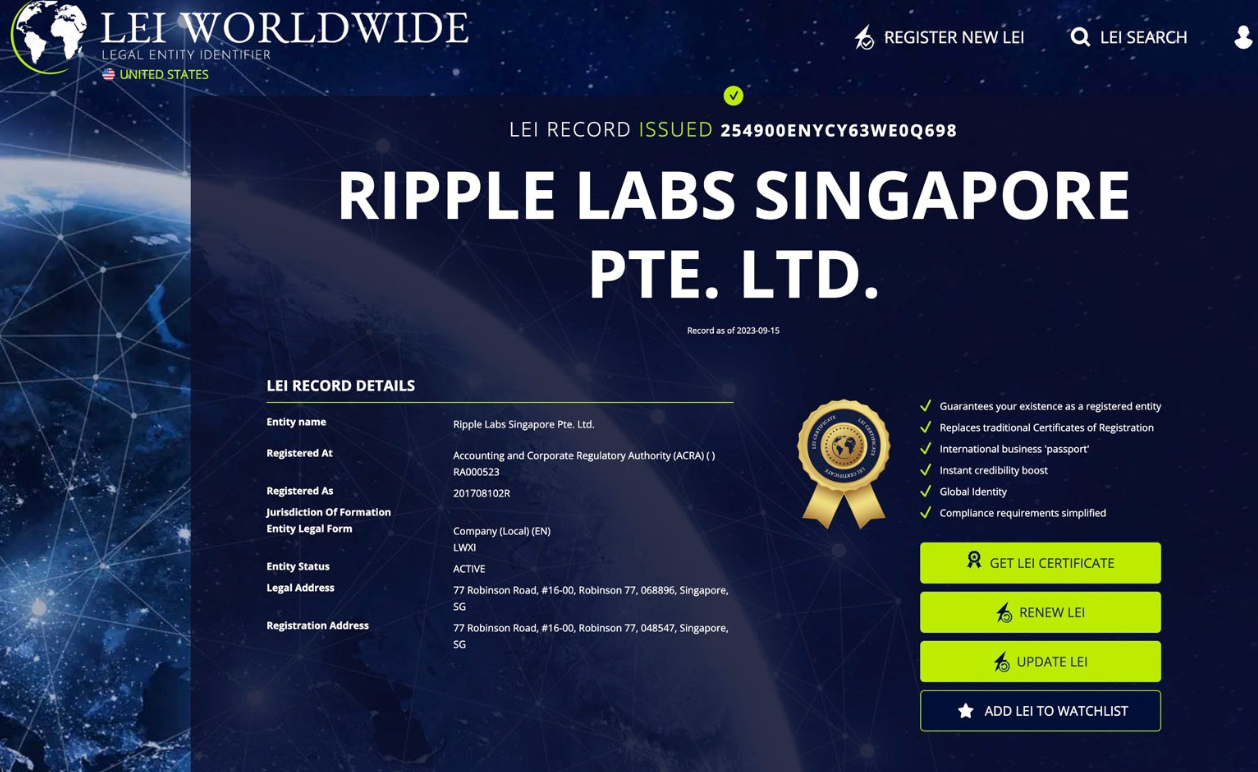- Ripple’s integration of ISO 20022 and LEI positions XRP for seamless, compliant cross-border transactions in real-time finance.
- XRP’s early compliance infrastructure gives it a head start in regulated ecosystems, especially with CBDCs and tokenized assets.
Ripple’s XRP is quickly becoming one of the most important players in the pursuit of regulated, real-time finance transactions. Crypto analyst SMQKE has highlighted the role of XRP within this new ecosystem. He emphasizes Ripple’s preparation to play a role within infrastructures that require both speed and stringent compliance. Its strategic alignment with ISO 20022 and holding a Legal Entity Identifier (LEI) are cornerstones to this argument.
The LEI is a 20-character alphanumeric code that uniquely identifies legal entities engaging in financial transactions. Ripple’s early acquisition of this identifier puts it ahead in the compliance game. It’s not just about having the LEI—it’s about what it enables. As global financial systems adopt ISO 20022, having this validation layer becomes increasingly critical to participate in regulated frameworks.

SWIFT, a global leader in financial messaging, reinforces the significance of the LEI. According to SWIFT, using this identifier allows for “an exact identifier that can provide a 100% match and validation in milliseconds.” That level of precision drastically cuts down verification times, helps detect fraudulent attempts, and ensures the recipient of a payment is legally tied to the intended entity.
Ripple’s Credentials Deliver Real-Time Readiness
The LEI validation process contrasts sharply with current methods, which often stall due to inconsistencies in how names and account details are presented. Without LEI, verification tends to rely on ambiguous data and manual interventions. SWIFT documentation shows how LEI-based verification eliminates such delays, streamlining account-to-account transactions on a global scale.
SMQKE’s observations further indicate that Ripple is poised for a bigger role as more financial networks embrace ISO 20022. Ripple’s compatibility with these systems means XRP can move seamlessly across jurisdictions that demand not just technological capability but also institutional legitimacy. Ripple’s LEI credential effectively acts as its passport into the world of next-generation finance.
A particularly compelling use case mentioned in the analysis is Ripple’s suitability for central bank digital currencies (CBDCs) and tokenized deposits. These new forms of money require infrastructures that can validate legal entities instantly. Ripple’s existing compliance position means XRP can already interact with these systems, placing it ahead of rivals still catching up on regulations.
ISO 20022 Alignment Strengthens XRP’s Settlement Capabilities
ISO 20022 doesn’t just make transactions faster; it enhances their quality and security. Ripple’s adoption of this global messaging standard, alongside SWIFT’s own endorsement, signals a shift toward deeper interoperability and regulatory compliance in cross-border payments. The LEI plays a key role in ensuring every transaction happens between verified entities, further reducing risks tied to identity mismatches.
These developments matter because global payment systems are currently bogged down by slow reconciliation, identity verification issues, and manual compliance checks. The shift toward automated, LEI-based processes unlocks new possibilities for real-time movement of funds under tight regulation. That’s the vision Ripple is building toward, and XRP is the instrument designed to fit into that structure.
Recommended for you:
Credit: Source link




